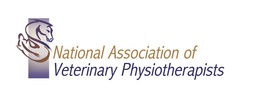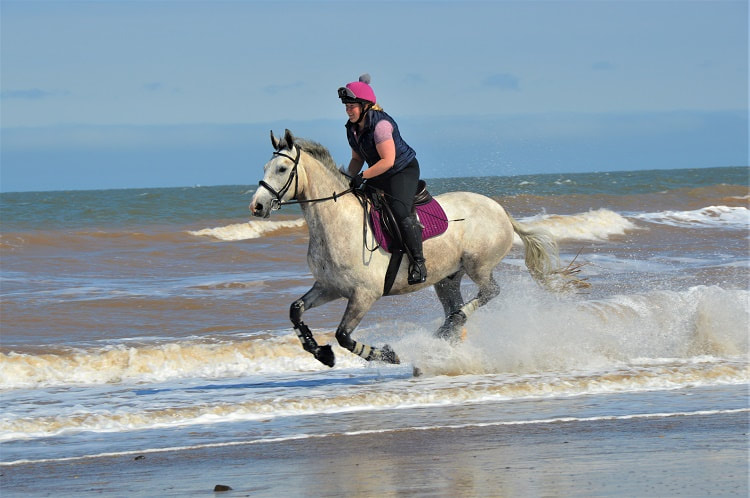|
For animal owners
Horses need exercise on a daily basis in order to keep their athletic shape and stature. Horse owners need to understand the importance of correct exercise and to create an exercises regime that works for their horses’ individual requirements. Here we discuss the importance of exercising your horse for good health as well as some different methods to try. How much exercise does my horse need?The amount of exercise required can vary from horse to horse, and an exercise programme should take into account your horses’ age, ability, condition and any physical problems your horse may have. Horses that live out with out other horses will get more exercise naturally without any effort from the owner as they will be able to move about whilst grazing. If they are kept stabled, they have less space to move around therefore daily exercise is vital. Turning out with other horses allows them to interact and socialise with other horses. Horses are naturally active animals and in the wild horses can cover up to 80km per day. They need to travel to where they can acquire water and then move on to find the best available grazing, so they are always on the move. Once we domesticate horses and keep them in stables and paddocks it can sometime be difficult to give them enough exercise to keep them fit and healthy. Therefore, their exercise needs to be planned and more structured to keep them in the best possible shape. Why do horses need to move a lot?Horses are not den animals - anatomically and physiologically they are designed to be walking around grazing with the occasional burst of speed and endurance, using their muscles for normal feeding posture i.e head and neck down which allows for coincidental ‘drainage’ from the airways. Movement affects every physiological component – the respiratory, cardiovascular, neurological, lymphatic, and digestive systems. Importantly for most ridden horses it affects the musculoskeletal system, keeping joints and muscles functional and flexible. Most of us keep horses to be able to enjoy all aspects of ridden work, and there is no pleasure for either party if our horse is shuffling and creaking along, as opposed to being forward and enjoying their work. What is the best exercise for a horse?This is dependant on many factors – age, ability, condition, and existing physical issues – and what is our end goal? There are so many different levels owners may be looking to achieve, from pleasure riding and amateur competing to elite professional competition. Whichever level we are working towards there must be a basic level of fitness from which to structure an exercise programme which will lead to the owner achieving their goal. Fitness to work is achieved over a related time from a continued response to increases of natural stresses of progressive and planned intensity. Slow steady movement with short bursts of speed lay down the foundations of fitness. We can then build on these basic fitness levels with more sustained training in whatever discipline and level we have chosen, whilst keeping the horse willing and ready to perform and with minimum risk of injury due the stresses of the work we are doing. In any exercise programme the aim is to create a balance of work and recovery keeping the horse mentally and physically in good health allowing them to be ready and willing to perform. RidingThis is the obvious way to exercise and the reason most owners have a horse in the first place. Having achieved a basic level of fitness we can then begin training to increase work levels relative to our chosen discipline. The higher the level of work we require from our horse, the more important it is to allow recovery days – if we continue to add pressure and stresses without allowing physical and mental recovery, we risk our horse becoming sore, reluctant to work and the risk of long-term injury to joints and muscles. Any balanced exercise programme will have a mixture of ridden work, lunging/long reining (if suitable for your horse), hacking and days off plus the daily turnout. All horses should be sufficiently warmed up before any intense work begins, and your warm up programme will depend on your horses’ existing physical condition, aimed at warming up joints and muscles it may take anything up to 25 mins for some horses to be ready to start the more intense part of the schooling session. Once work is complete allow a cooling down period of stretching and unwinding (both mentally and physically). The cool down period is also seen as the horse’s reward for the work they have just given us – we take the pressure off them before we finish our ridden session. TurnoutAs already mentioned, turn out not only exercises your horse by gently and naturally keeping joints and muscles moving, but it is also beneficial for their digestive and respiratory health and their mental well-being. The available amount and quality of the pasture must be monitored so that over eating does not become an issue – no horse wants to work when carrying too much weight and the health implications can be disastrous. Also consider the need for shelter and shade of some sort in the field – especially during some of our summer periods when the heat is intense – horses can also suffer from heatstroke and sunburn – if there isn’t any shade or shelter available, most owners will sensibly turn out overnight. Lunging / Long-reiningThis can be beneficial when done correctly but can be detrimental when done badly. Lunging or long reining allow the horse to work without a rider on their back and gives the rider a chance to watch how their horse is moving. It can be a strenuous form of exercise and some physical conditions will contraindicate lunging but may be more suitable for long reining. In either case, the horse needs to learn how to be lunged or long reined correctly and the handler needs to be knowledgeable and capable enough to monitor and make corrections. HackingThis has many benefits for the physical and mental well- being of your horse. Some riders will allow the horse to hack out on a long rein and use it as a total relaxation session, some will keep the horse working in an outline. Much depends on the character of the horse – it’s not a good idea to hack on a long rein when you are on a spooky horse – and however you choose to hack out, the aim should be that the horse is not under pressure to ‘work’ and can be allowed intervals to stretch out and relax. Even when hacking you will be doing some schooling – moving around parked cars and avoiding spooky objects requires us to use the same ridden aids that we use when schooling. Walk hacking is a great exercise when rehabilitating injuries – a good rhythmical and forward pace is exactly the type of work which helps to develop muscle mass. Walking can be tiring for weak muscles, so as with any exercise programme hacking needs to be tailored to avoid fatigue if your horse has a physical condition that you are rehabilitating. HydrotherapyThe water treadmill or the swimming pool – the water resistance provided by this type of exercise can help rehabilitate certain conditions, it will help build muscle mass and increase cardio-vascular fitness. As with all forms of exercise any underlying condition should be considered before adding it to your work or rehabilitation programme. If joints and muscles are painful or inflamed, then address these issues first with your vet and veterinary physiotherapist. With any form of exercise that is new to a body, it needs to be built into the programme gradually and the animal monitored for any signs of mental or physical stress. In SummaryExercise is beneficial for the health and well being of your horse. Certain factors need to be considered when planning an exercise programme, these factors are based on the individual needs and ability of the horse balanced with the riders’ expectations and goals.
A good basic fitness programme lays the foundations for us to be able to build on, this is especially beneficial for young horses and horses who have been out of work for an extended period. Intense or targeted exercise requires periods of recovery to prevent fatigue and the risk of injury to the joints and muscles. Intensity is relative to the individual based on their age, ability, condition, and any underlying physical problems.
0 Comments
Your comment will be posted after it is approved.
Leave a Reply. |
AuthorNAVP Archives
June 2024
Categories
All
|
The Association |
Services |
|


 RSS Feed
RSS Feed